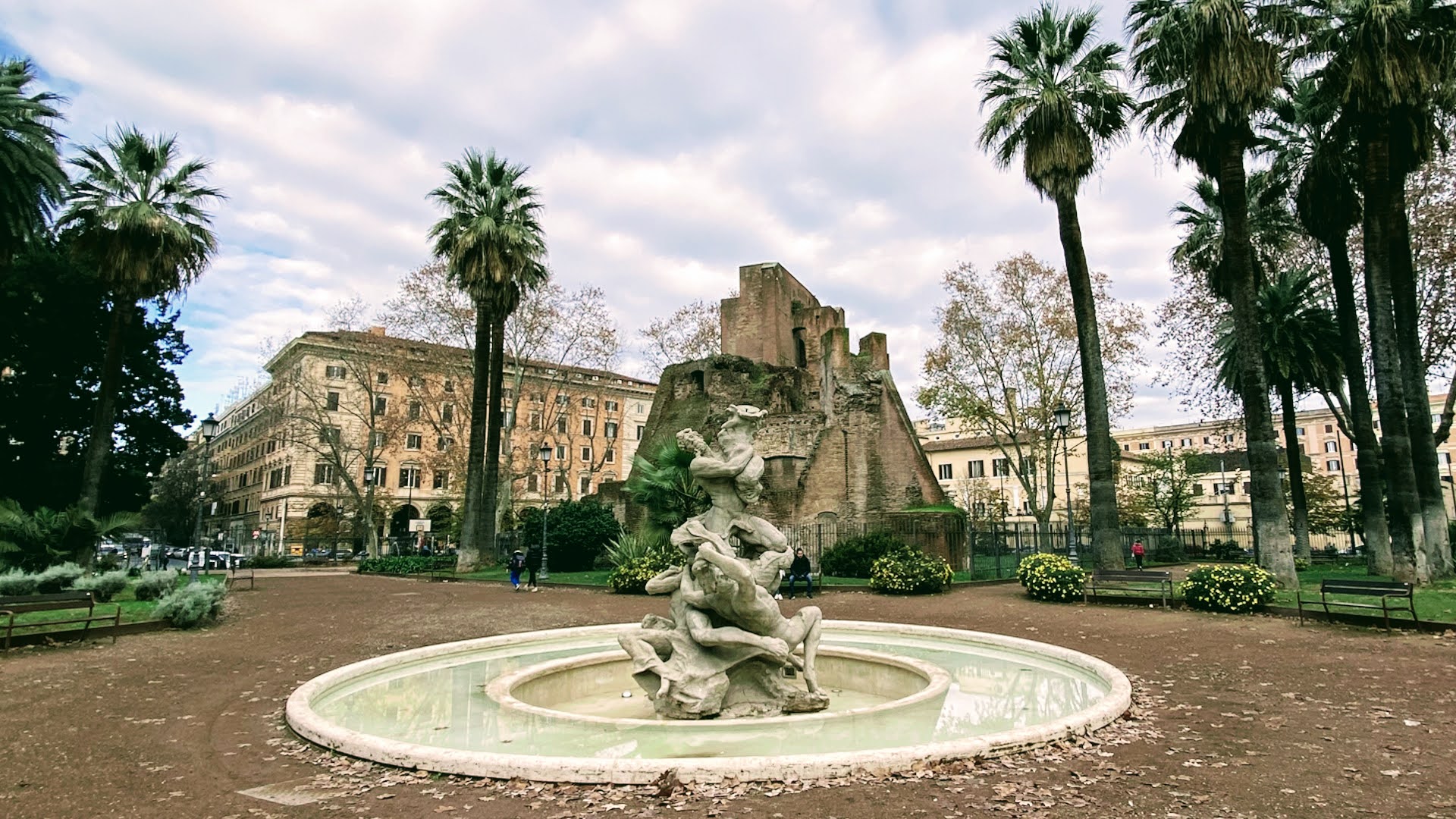
A dolphin, three tritons and a large octopus entwine themselves in a fight inside the Nicola Calipari Gardens in the centre of Piazza Vittorio Emanuele II, built in 1870 in honour of the first king of Italy in the heart of the multi-ethnic Rione Esquilino, not far from Termini Railway Station.
The evocative scene fixed in marble by Mario Rutelli around 1910 was intended to complement the the most fascinating of Rome's modern fountains, the Fountain of the Naiads in Piazza Esedra. The sculptural group was to be placed between the sensual nymphs arranged in the four corners of the basin of the fountain. Resting on a sea animal symbolising water in its various forms, they had replaced four simple stucco lions and were: the Nymph of the Oceans on a sea horse, the Nymph of the Rivers on a water snake, the Nymph of the Lakes on a swan, the Nymph of the Underground Rivers on a lizard.
Harshly criticised and ironically dubbed a 'mixed fry' by the shrewd irony of the Romans, the chaotic sculptural composition created by the Palermo artist was removed and was later replaced by the Glauco - the vigorous figure enveloped in a dolphin from whose mouth shoots out a very high jet of water - which today stands in the centre of the monumental fountain in the present-day Piazza della Repubblica.
The 'fritto misto' was instead relocated to the gardens of Piazza Vittorio in 1913, at the centre of a simple travertine basin, where it still stands today, not far from the mighty remains of the ancient Acqua Giulia fountain, the Trofei di Mario, relocated in the 16th century to the balustrade of Piazza del Campidoglio.
Photo: Redazione Turismo Roma
Informationen
 Condividi
Condividi
Location
Um mehr über alle barrierefreien Dienste zu erfahren, besuchen Sie den Abschnitt barrierefreies Rom.











































